I was led into the market by my mentor in 2017. During my first six months, I didn't understand anything and invested 10,000 capital. My mentor guided me on what to buy, and I could earn a little every day, accumulating my capital to 600,000. But once I started trading on my own, I would definitely incur losses, making small gains and large losses, and the account once shrank by 50%.
After that, I spent a whole 11 months trading contracts, growing from 2,000 U to over 2 million U now, achieving a 1000 times profit!
Relying on just one method with a winning rate of up to 90%, once mastered, the crypto world will be like your 'ATM', making money as easy as breathing!
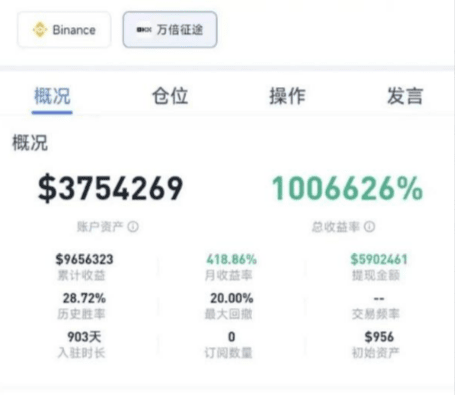
There is the simplest method with a winning rate of around 90% (a few life-saving suggestions for beginners)
When I first started trading cryptocurrencies, I stayed up late every day watching the market, chasing highs and cutting losses, losing sleep over it. Later, I stuck to one simple method, surprisingly survived, and slowly began to stabilize my profits.
Looking back now, this method, although simple, is effective: "If I don't see familiar signals, I won't act!"
Better to miss a market than to place random orders.
With this iron law, I can now stabilize an annual return rate of over 70%, and I no longer have to rely on luck to survive.
Here are a few life-saving suggestions for beginners, all based on the experiences I've learned from real trading losses:
1. Trade after 9 PM
During the day, the news is too chaotic, with various fake positives and fake negatives flying around, and the market fluctuates wildly, making it easy to get tricked into the market.
I usually wait until after 9 PM to operate, as the news stabilizes by then, the candlestick charts look cleaner, and the direction is clearer.
2. Look at indicators, not feelings
Don't rely on your feelings to trade
Before placing an order, check these few indicators:
MACD: Is there a golden cross or death cross
RSI: Is there overbought or oversold
Bollinger Bands: Is there a contraction or breakout
At least two of the three indicators must provide a consistent signal before considering entering the market.
4. Stop loss: Dignity is more important than money
"Cut immediately if the direction is wrong, hesitating for a second loses 10%"
Fixed stop-loss method: 3% of principal is the red line
Dynamic stop-loss method: run away after a 20% pullback from a 50% profit
5. Withdraw funds on time every week
For example, if you made 10,000 U this week, don't always think about doubling it! I suggest you withdraw 4,000 U to your bank card immediately and continue playing with the rest.
I have seen too many people who 'made 3-5 times' but ended up losing it all with one pullback. The rest continued to roll. This way, over time, the account will get thicker. #Current situation in the crypto world
6. There are tricks to reading candlesticks
• For short-term trades, look at the 1-hour chart: If the price has two consecutive bullish candles, consider going long. #Bitcoin and US tariff policy
• If the market is flat, switch to a 4-hour chart to find support lines: consider entering when the price drops near the support level.
In the crypto world, various methods emerge endlessly. Let's take a look at some common practices.
1. Veteran's cryptocurrency holding secrets
This operation really only requires two steps: Buy! Hold! Then just guard your treasure and wait for it to bloom. It sounds easy, but doing it tests human nature: when the market rises, you feel anxious; when it falls, you feel panic. If you can truly hold long-term, the returns will naturally not disappoint you.
2. Bull market quick spins
In a bull market, invest a small portion of idle money. The investment principle is: do not heavily invest, only use one-fifth of the total capital. Choose coins with medium market capitalization, switch when they rise, and switch when they fall. Just keep it rotating. Even if occasionally trapped, you can quickly break free in a bull market atmosphere—but remember, don’t buy those overly trashy coins.
3. Follow the flow of money
In a bull market, capital flows like an hourglass, sinking from large coins to small coins step by step. First, top coins soar, then mainstream coins, and finally niche coins. You have to keep up with the rhythm to make money easily.
4. Pyramid counterattack
In a market downturn, it's time to show real operations—the pyramid buying method. Buy more as it falls, and invest heavier. The benefit of doing this is: low cost and low risk. Once the market warms up, the profits can be delightful.
5. Moving average sword
For those who understand candlestick charts, this skill is essential. Set your moving averages, check where the current price is between the two lines, and then make smart buying and selling decisions. This trick is suitable for players with a bit of foundation.
6. Violent coin holding technique
Find a few quality coins you believe in, buy low and sell high, and use the profits to buy more coins. This trick can make your coin stash become more abundant, and your gains will rise accordingly.
7. ICO snowball
Jump in when new coins are issued, cash out when they rise several times, return the principal, and reinvest the profits. This cycle can keep your principal safe and your profits rolling.
8. High sell low buy cycle race
Look for coins with large price fluctuations, buy low, sell high, and repeat. This operation requires you to stay glued to the market and react quickly.
9. Small coin investment big adventure
Use a small amount of money, like 10,000, and average it across ten small coins. These little buddies have low costs and large upward potential; take profits when they increase three to five times. Even if you get trapped, don't panic; fish for big ones in the long term. Once you make a profit, withdraw the principal and invest in the next small target, enjoying the effect of compound interest.
If you are also into technical analysis and are delving into technical operations in the crypto space, consider following the public account (Yuan Yuan Ju Cai), where you will get the latest crypto intelligence and trading tips!
Using a method I personally tested, I turned 500,000 into 10 million, using just this trick (price action—complete guide to trading in a sideways market), with a winning rate of up to 99%, suitable for everyone!
Looking back at my early days in the trading market, I tried all sorts of ways to find knowledge about this area online, hoping to learn everything as soon as possible so I could start real trading and make money.
Imagine this: you have spent a fulfilling day trading and are currently on a winning streak, even tripling your capital. Therefore, in this state of high confidence, you decide to engage in a 'high-risk high-reward' trade, as shown in the diagram below.
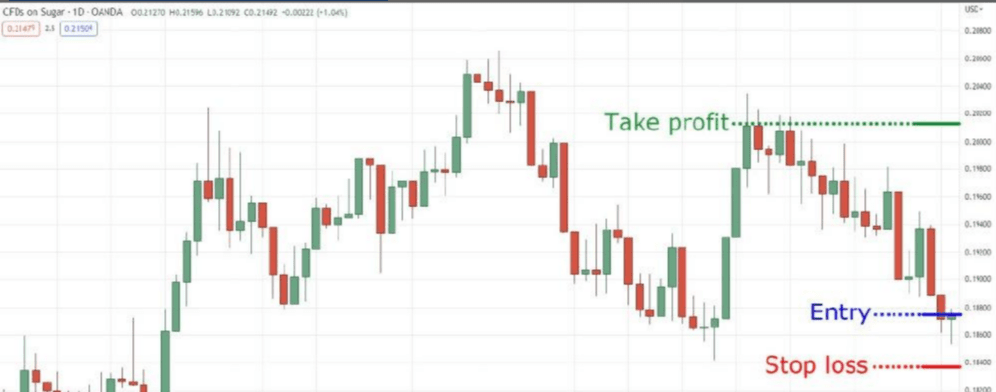
However, over time, the trading situation has not improved as expected, but continues to decline, as shown in the diagram below.
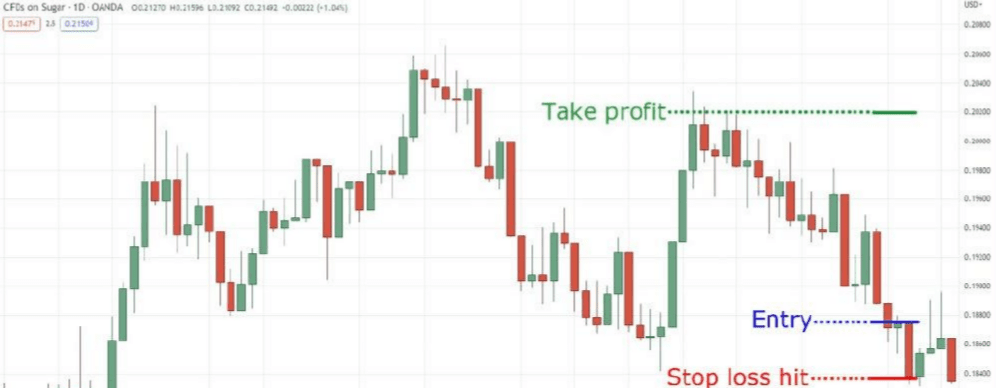
Trading conditions are continuing to deteriorate, as shown in the diagram below.
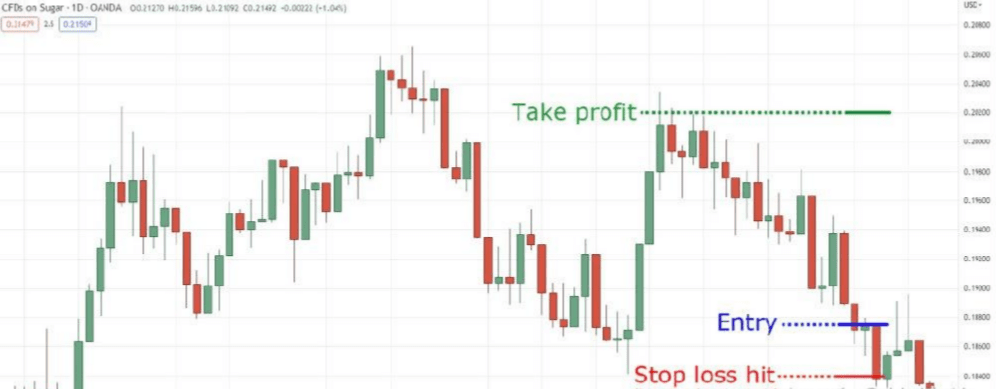
You may be wondering if you should exit this industry, however, you have come so far. Therefore, driven by your boldness, you increased your losing position and became an 'investor', as shown in the diagram below.
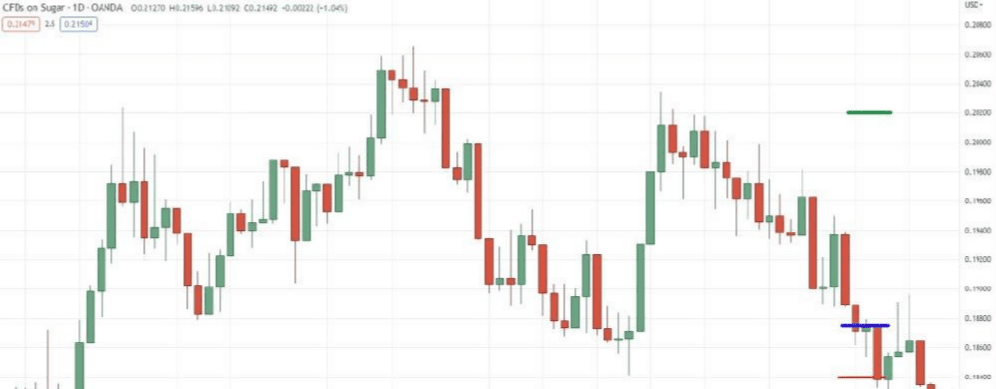
What will happen next? As you anticipated, the situation continues to worsen, and prices fall further, as shown in the diagram below.
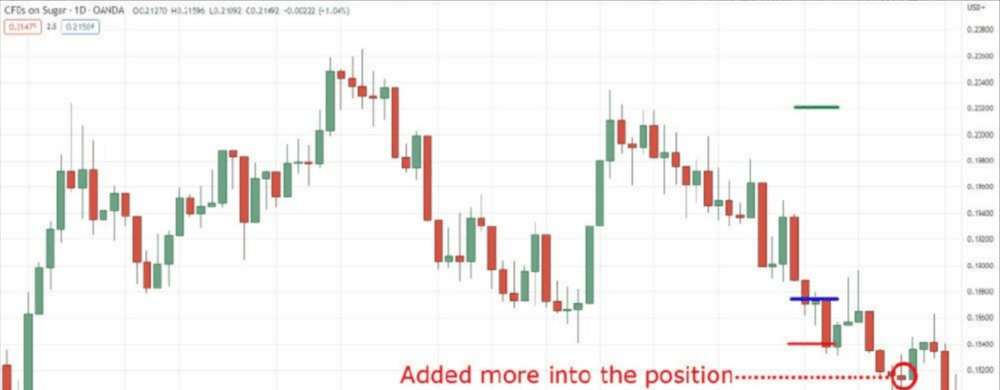
At this moment, you have accepted the fact of failure and are unwilling to let the trade continue to erode your profits. Therefore, you decide to exit the trade, as shown in the diagram below.
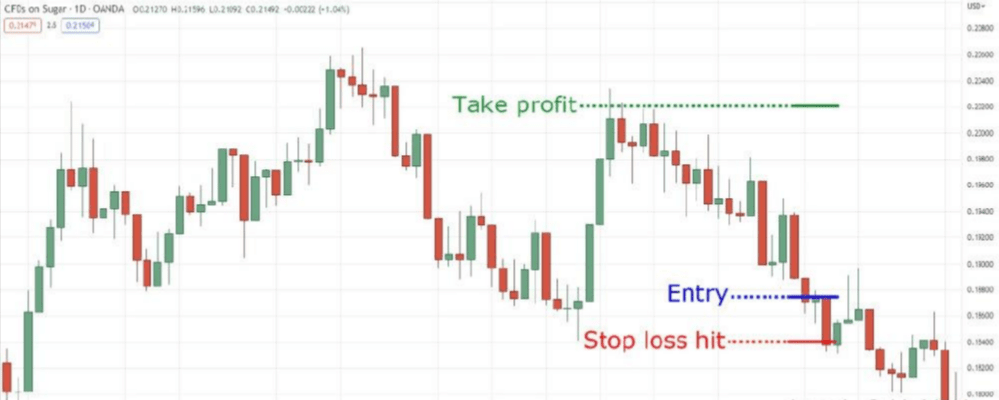
So, what happens when you exit a trade? As you have observed, although it frequently benefits you, the trade has not accompanied you, as shown in the diagram below.
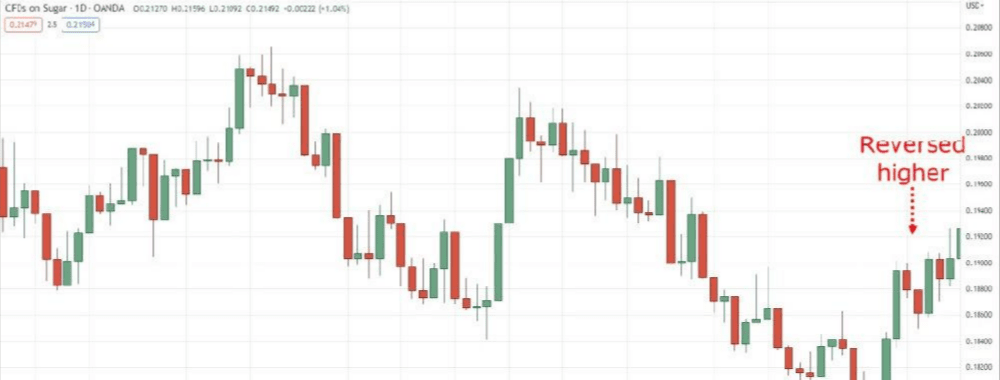
If you have experienced this situation, then the problem may lie in the fact that you are trading in a sideways market.
In this trading guide, you will learn the following:
(1) The true essence of trading in a sideways market and how to accurately judge the market condition you are trading in;
(2) This trick can correct most of your trading mistakes immediately when trading in a sideways market;
(3) The correct and simple method for trading a sideways market.
2. What is a sideways market (and why is it difficult to trade)
A range or sideways market refers to a market environment with low volatility, as shown in the diagram below.
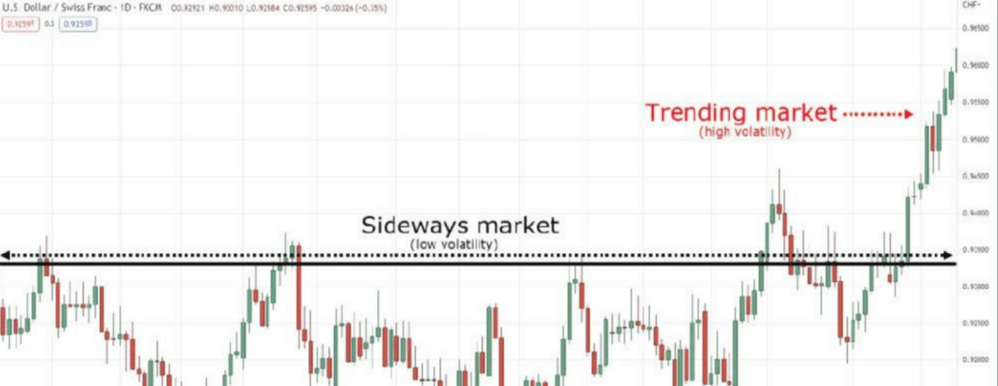
This describes a market condition where there is fierce competition between buyers and sellers. You can imagine it as trench warfare in World War I, where the sideways market presents a stalemate between buyers and sellers. Two opposing camps are at a standstill, occasionally one side will launch an attack to try to seize the other's position, but whenever the other side counterattacks, they often return to their original position. This is a portrayal of the sideways market.
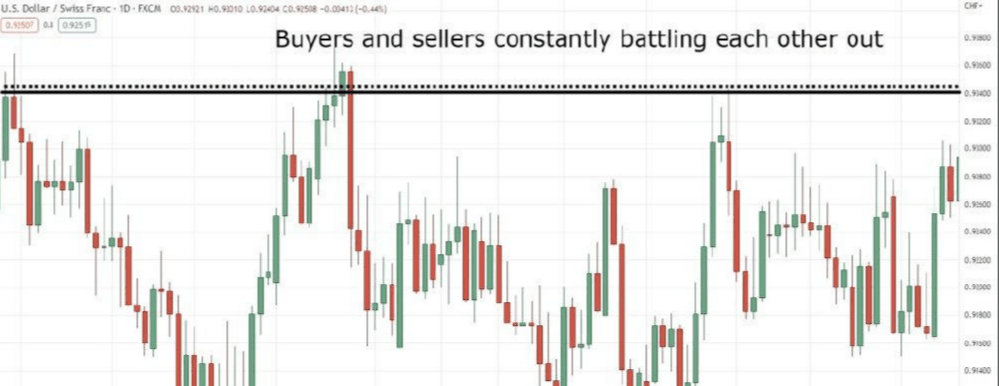
In the current market environment, there is no concrete evidence that either party in the trade has achieved a decisive victory; buyers and sellers continue to engage in fierce clashes, and it is this ongoing confrontational interaction that makes this market condition one of the most complex and difficult types in the trading process.
When can a range market achieve complete effectiveness? To address this question, investors need to closely monitor the actual position of the price rather than its expected position. This indicates that trading behavior should be based on the signals actually presented by the market rather than personal subjective expectations. Next, we will explore when the market is recognized as a sideways volatility market, starting from the clear market structure formed by the highs and lows of the previous market cycle, as shown in the diagram below:

However, we have not yet entered a range market. The sign that the market enters a range mode is the moment it rebounds 'significantly' from the previous low (similarly, if the price reaches the previous high and then significantly retracts from there), as shown in the diagram below.
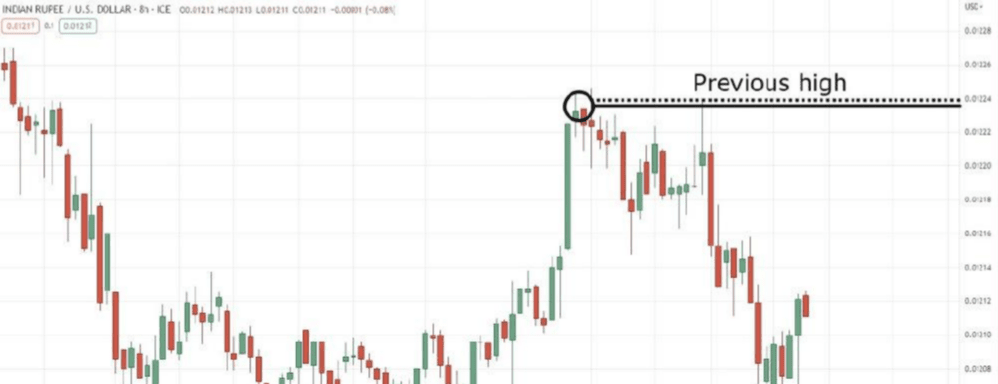
You are currently in an effective sideways market stage, as the current price level is precisely located in the mid-range of the previously established price range, as shown in the diagram below.
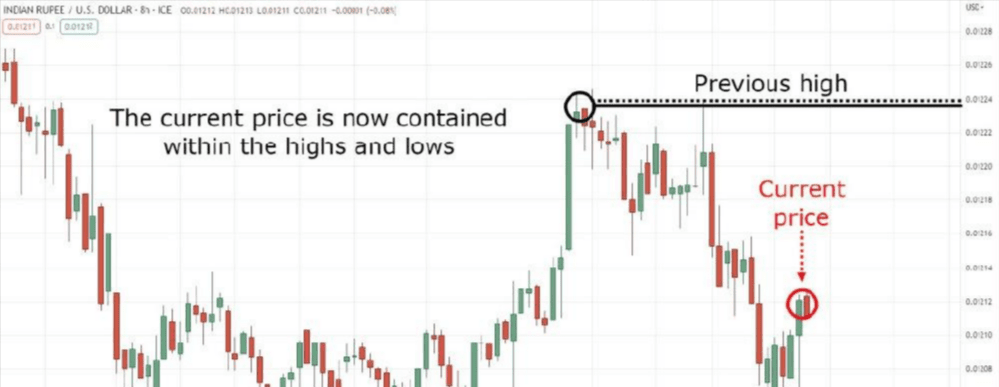
The above are the key points you should master in a sideways market environment.
3. The truth about trading in a sideways market
Trading in a sideways market is extremely challenging. This is not only due to its unique market environment but also because two situations may arise in a sideways market: expanding its volatility range or contracting it.
(1) Range expansion
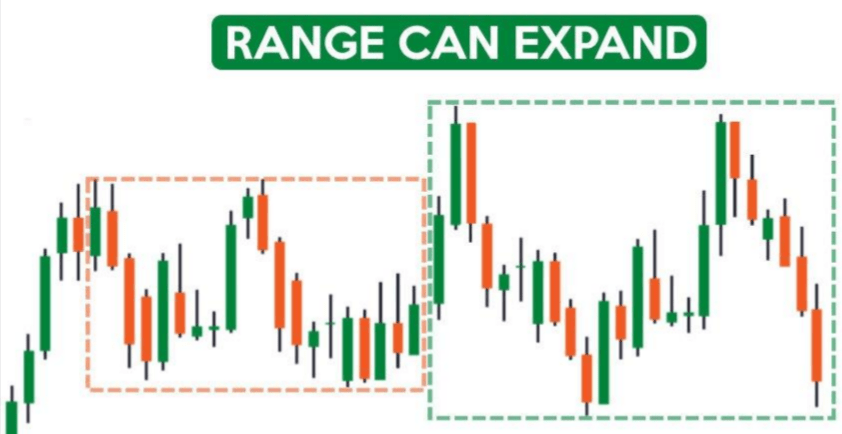
When examining trading-related textbooks, they often display ideal sideways market models, as shown in the diagram below.
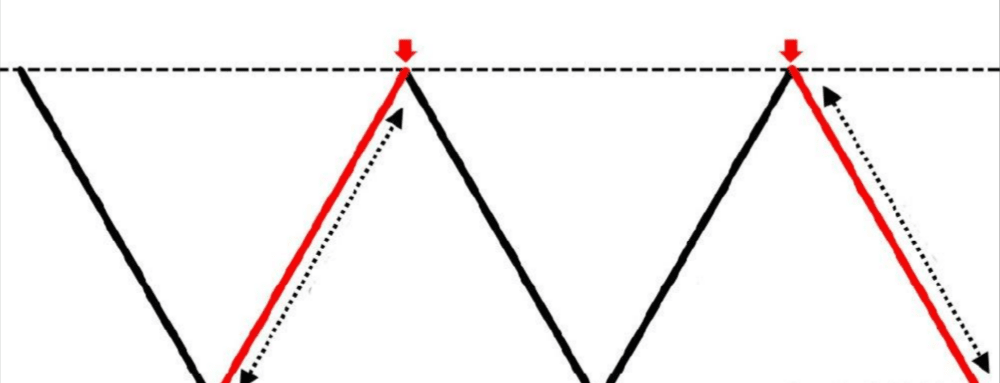
This type of simplified schematic is crucial for understanding related concepts, however, in the real market's actual operations, as shown in the diagram below.
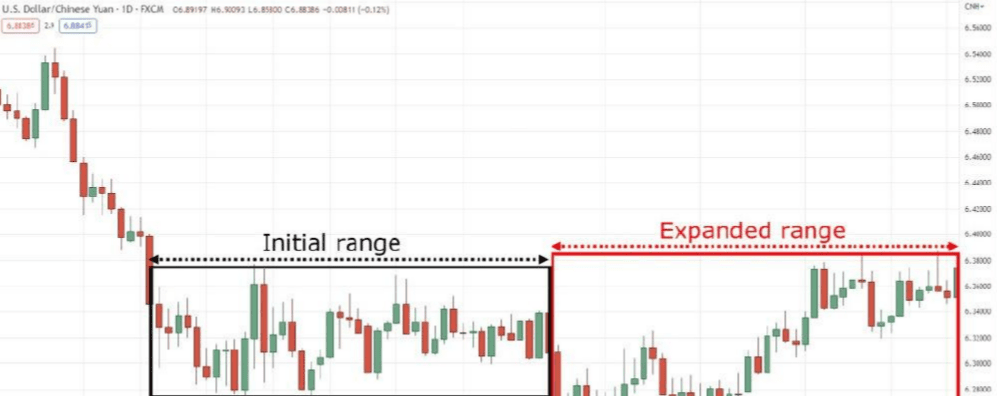
This is usually a market that won't remain stable but may expand its volatility range. In the subsequent chapters, I will guide you on how to cope with and master trading strategies for such markets. Meanwhile, a sideways market may also exhibit the following characteristics.
(2) Range contraction
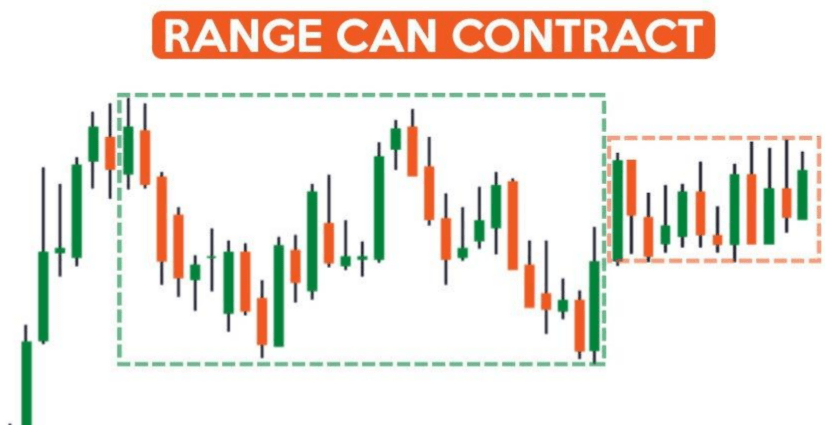
This market model has significant similarities to other chart patterns, as shown in the diagram below.

They are actually just different variants of a shrinking volatility range. Moreover, it should be noted that these patterns may sometimes appear over a span of months to years, as shown in the diagram below.
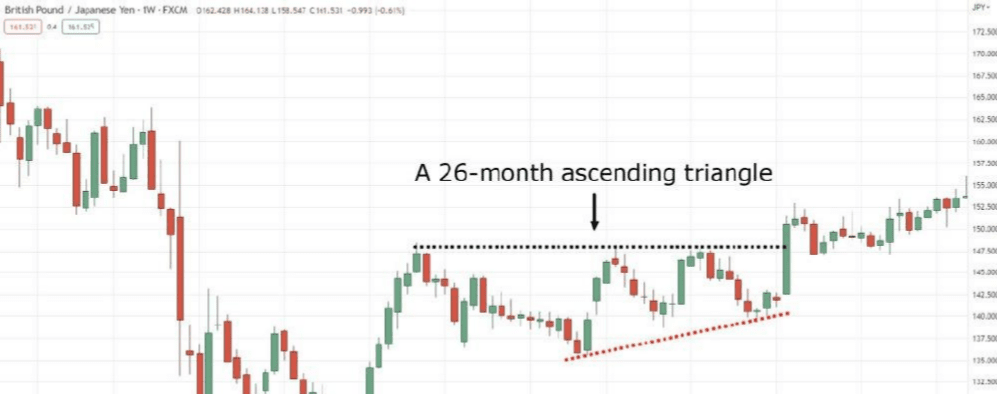
In this guide, we will focus on those large-scale sideways markets. If you want to learn more about chart patterns in detail, please refer to the following resources: (Chart Pattern Basics Guide). Next, I will show you how to trade precisely in a sideways market.
4. Improve skills in sideways market trading
To succeed in a sideways market, you must exhibit the decisiveness of a commander. As a commander, you give orders to your troops tactically, deploying various assets, including tanks, and even launching airstrikes when necessary. As a commander, you stay at the edge of the battlefield, directing your troops in battle; this is the key to mastering trading in a sideways market. You should play the role of an observer, allowing buyers and sellers to compete in the market, as shown in the diagram below.
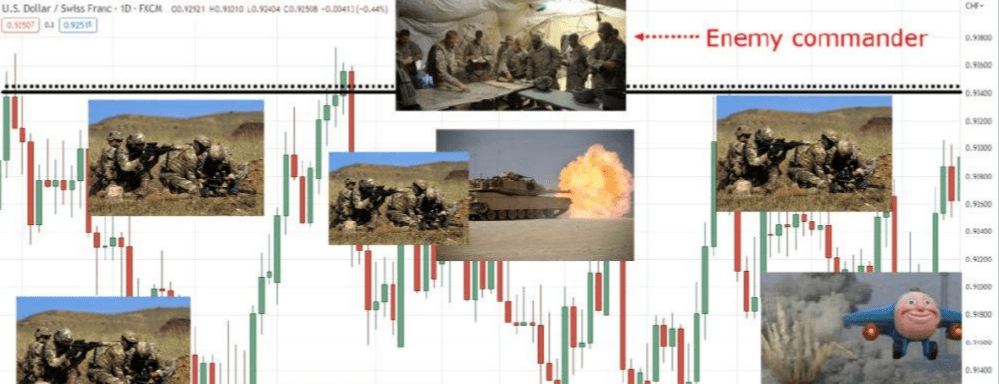
It is evident that one should avoid trading in the middle, top, and bottom of the price range. When the price hits the extremes of the range, namely the top or bottom, you should confirm it. The meaning of 'confirmation' will be explained in detail in the subsequent content.
5. Simple strategies for trading in a sideways market
When the price is in a sideways market, and the market is at a support or resistance area, not in the middle of the range, a strategy is to confirm and execute trades by observing false break phenomena, as shown in the diagram below.
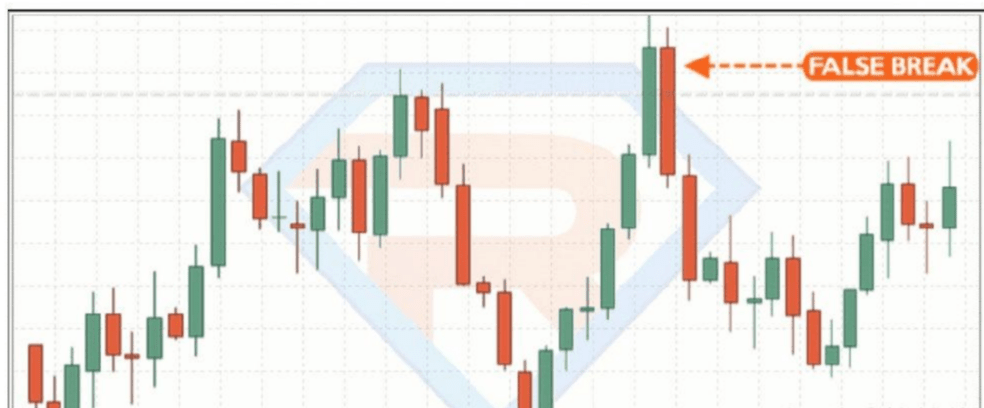
Do you remember I mentioned that the volatility range may expand because the purpose of a false rest is to take advantage of this phenomenon? Previously, I showed you how to identify false breakout patterns in a sideways market. However, I need you to pay special attention because trading operations can be quite complex.
Assuming the price is currently at a resistance area (of course, this area must be within the valid volatility range), in this case, you need to focus on two key points. First, observe whether the price closes within or outside the support area, as shown in the diagram below.

You expect to see prices overextend within or below the volatility range, but at this stage, you should not rush to take action. Do not blindly chase prices; therefore, at this point, if the price continues to drop, we choose to abandon this trade. However, if the price rebounds back into the volatility range, what should we do, as shown in the diagram below?
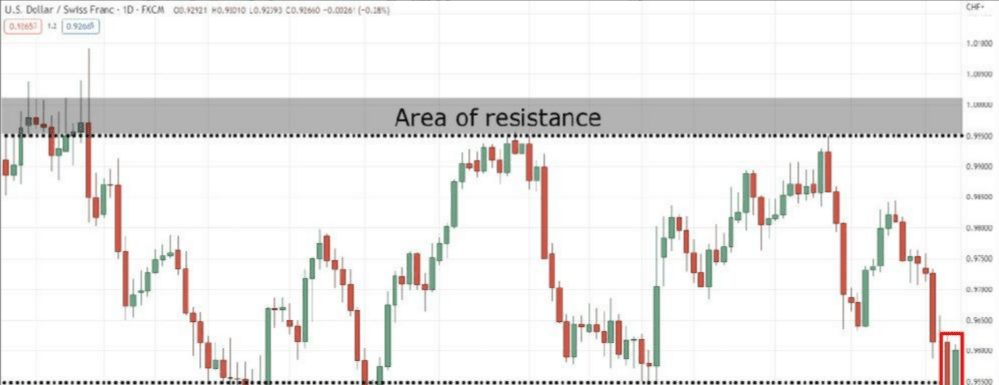
Next, you confirm an effective false breakout. Of course, you can consider entering the market when the next candlestick opens, setting your stop loss at a reasonable distance below the previous low, as shown in the diagram below.
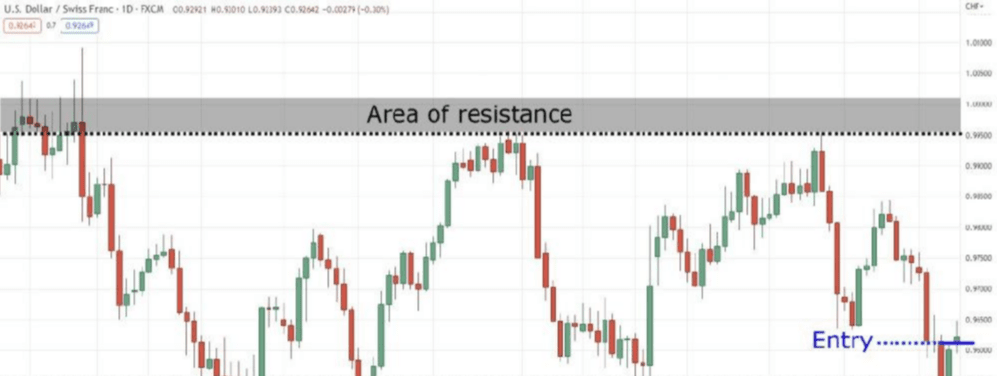
Since you are participating in trading in a sideways market, your goal is to realize profits and exit the market before buying pressure increases, as shown in the diagram below.
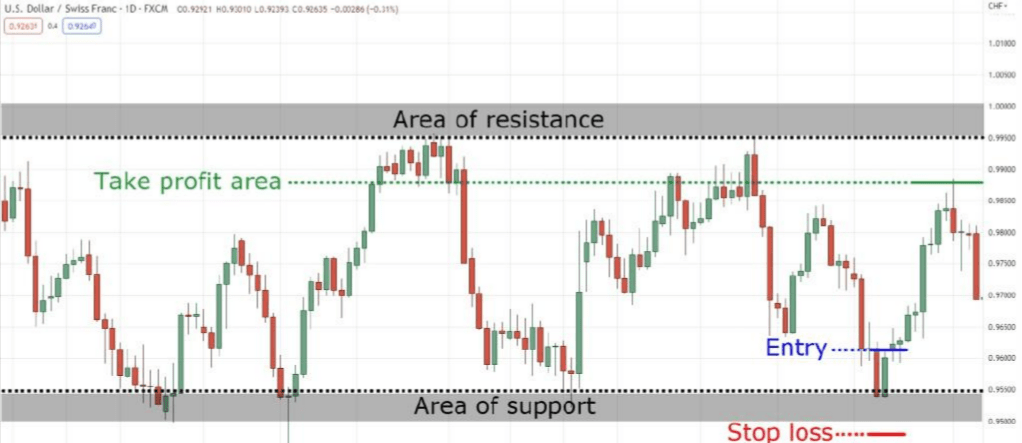
You should directly set profit targets at the support level because the volatility range may shrink. So let's review how to trade using false breakouts in a sideways market:
(1) First, wait for the price to close outside or above the support/resistance area;
(2) Next, observe whether the price closes back to that range, and enter the market when the next candle opens;
(3) Finally, close positions in a timely manner to realize profits before opposite trading pressures emerge.
Trading in a sideways market using false breakouts as a strategy can achieve a good balance between risk and conservatism, which is why it is considered a very flexible trading setup, as it applies to most time frames.
6. Conclusion
The following is a summary of the core points of this guide:
(1) A range market constitutes a challenging market environment, where the forces of buyers and sellers are relatively balanced. When prices fluctuate between established highs and lows, this market condition is considered effective.
(2) In a sideways market, it is important to recognize that the volatility range may both expand and contract.
(3) Use general trading strategies, such as waiting for false breakouts (i.e., volatility range expansion), which can help traders achieve profits in a range market.
Simple and practical cryptocurrency trading tips:
1. Divide money into batches: Suppose you have 10,000, divide it into five portions, and use one portion, which is 2,000, for each trade.
2. Buy a little to see: Use this 2,000 to buy a coin to try.
3. Buy again when it drops: If the price of this coin drops by 10%, then buy another portion.
4. Sell when it rises: If the coin price rises by 10%, hurry to sell a portion and make some money.
5. Repeat the above steps: just buy and sell until your money runs out or your coins are sold out.
The benefit of small tricks: the advantage of this strategy is that even if the price drops, you don't have to panic because you can continue to buy. In fact, if you have used up all five portions of your money, the price has at least dropped nearly half. But unless the market is particularly bad, the price generally won't drop that fast. Moreover, every time you sell, you can earn 10%. For example, if you have 100,000 and use 20,000 each time, you can make 2,000 each time.


